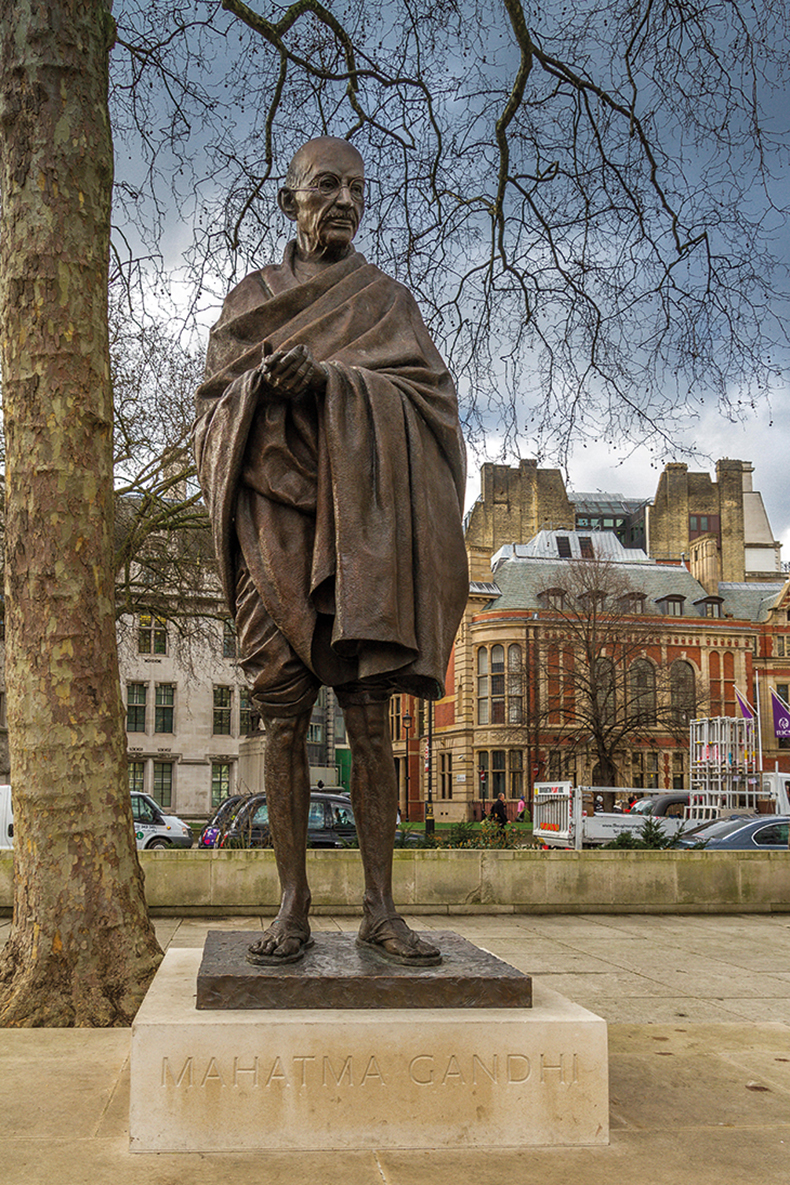From the April 2022 issue of Apollo. Preview and subscribe here.
Since the toppling of John Cassidy’s bronze memorial statue of Edward Colston in Bristol last year, public sculpture – normally a subject of little general interest – has become a hot topic. Those who topple statues are understandably unconcerned with artists, their interest being entirely focused on the targeted subject, whether it be Hitler, Stalin, Ceausescu, Saddam Hussein, Robert E. Lee or Colston. They give little or no thought to the creators of such monuments, or whether the monument has artistic merit, and it is often difficult to discover the name of the artist involved. Happily, however, publications such as those produced by the Public Monuments and Sculpture Association (forerunner of the Public Statues and Sculpture Association) and the updated volumes of Pevsner’s guides to the buildings of England make such information more accessible, though not helped by the fact that press coverage involving statues and public sculptures, whatever the context – toppling or unveiling – rarely mentions the sculptor’s name.
Philip Jackson (b. 1944), one of the more distinguished figurative sculptors working in the UK, has managed to avoid this tendency of being overlooked, and Studio Gallery Publications’ lavishly illustrated Philip Jackson: A Life in Sculpture is a welcome source of information about his work. Jackson may be one of the small band of contemporary sculptors pursuing the figurative tradition but, disconcertingly, he practises in two sculptural languages, reserving his detailed figurative style for public works and monuments while employing an entirely different sculptural vocabulary for gallery and exhibition pieces. For these he has developed a cast of stylised, abstracted mannerist figures based on 18th-century masked Venetian women, with chiselled surfaces and gilded, featureless faces.
Bomber Command Memorial (2012) in Green Park is Jackson’s most ambitious work to date; it is probably the most ambitious work of its type to be installed in a prominent London site since Rodin’s Burghers of Calais was erected beside the Palace of Westminster in Victoria Tower Gardens in 1915. The figurative core of the Bomber Command monument consists of a group of seven figures, each nine feet tall, facing roughly into the park and placed close together, intent on the same mission. The grouping is effective, though it seems extraordinary that the final arrangement was decided only after the figures were cast – it is the element of interaction that so successfully unites Rodin’s burghers.

Statue of Mahatma Gandhi by Philip Jackson, erected in Parliament Square, London, in March 2015. Photo: Steve Tulley/Alamy Stock Photo
I am slightly appalled to learn that Jackson found ‘the detail so complex’ while he modelled the figures that he had ‘to sculpt with the aid of a magnifying glass’. Bouquet seems to regard this as a matter for high praise; but over-attention to detail and reliance on photography bedevils much modern sculpture, demeaning the power of the figure, particularly when committees or living family members are anxious to have input. Lack of practical information to work with, however, can be as detrimental for the sculptor as excess: James Butler, the doyen of public sculpture, now in his nineties, once told me of the difficulty he had had in modelling a particular Indian guru since, in the absence of images of his subject, a devotee had been sent over to instruct him with regard to the guru’s appearance. However, the devotee could only visualise the guru when he kept his eyes closed. Another trend that diminishes many public works is the reduction or abolition of plinths – a trend of which I am afraid Jackson approves, preferring to have his figures occupying ‘the same ground as the spectator […] so when people see them for the first time they are not quite sure if they are sculptures or real figures’.
This striving for life-like accuracy and minimal ‘presentation’ reduces the impact of a number of his works, such as the figure of Gandhi (2015) in Parliament Square – a project favoured by David Cameron when he was prime minister, regardless of the fact that there already existed a very distinguished and well presented memorial to Gandhi by Fredda Brilliant, unveiled in 1968 in Tavistock Square, Bloomsbury, the area of London he knew best. In the mid 1990s my colleagues and I at the Fine Art Society declined on aesthetic grounds to subscribe to Lawrence Holofcener’s kitsch sculpture of Churchill and Roosevelt seated on a bench (1995): now sited on the pavement in New Bond Street, it is regularly used as a photo-opportunity by tourists who perch on the statesmen’s knees.
Parliament Square is an ideal place to study and assess the presentation of public sculpture: here there are a dozen statues ranging over two centuries, from Sir Richard Westmacott’s George Canning (1832) to Gillian Wearing’s Millicent Fawcett, erected in 2018. Apart from three of the most recent – Gandhi, Mandela and Fawcett – they are all raised on high stone plinths, giving an impression of gravitas, though this is compromised in the case of Epstein’s General Smuts (1956), who appears to be marching off his plinth, and Glynn Williams’s caricature of Lloyd George (2007), with his billowing cloak frozen in space and time. Ivor Roberts-Jones’s Churchill (1973) is not only the most monumental sculpture of the group but also the most pared down, which adds considerably to its power. Ian Walters’ statue of Nelson Mandela (2007), on the other hand, is little more than a three-dimensional photograph, in which even the pattern of his shirt is picked out in detail, thus providing another photo opportunity for tourists.
‘Philip Jackson: A Life in Sculpture’ by Tim Bouquet is published by Studio Gallery Publications.
From the April 2022 issue of Apollo. Preview and subscribe here.
